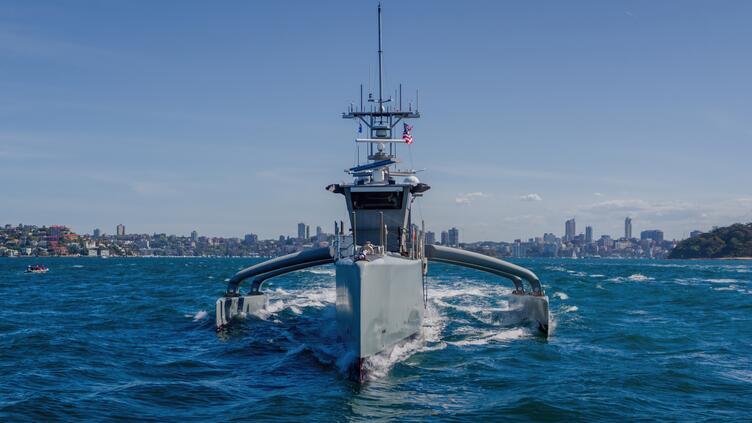Shaping AUKUS for the Age of Maritime Autonomy
This whitepaper explores the opportunities and challenges arising from delivering and exploiting autonomous maritime capability across the three AUKUS nations (Australia, the United Kingdom and the United States of America). It is part of Leidos’ Thought Leadership series, offering expert insights on the geopolitical and strategic challenges shaping our world.
For more than 40 years, sovereign states have been developing maritime autonomy. Leidos alone has vessels that have covered hundreds of thousands of nautical miles with the US Navy, both on and below the surface. The real question now is how to deploy it at scale, in ways that deliver operational advantage, despite the political, cultural and regulatory headwinds that continue to slow progress.
Under AUKUS Pillar 2 – which is focuses on advanced defence technologies – autonomy sits at the core. Crewed and uncrewed systems will need to operate together seamlessly if the partnership is to maintain an operational edge in the Indo-Pacific. Autonomous platforms are uniquely suited to missions that are dangerous or long in duration, freeing personnel for higher-value tasks while extending reach and resilience.
Despite the clear potential, adoption has been slowed by outdated regulatory frameworks. Current safety requirements often mandate that uncrewed vessels carry crew during trials, adding cost and compromising vessel design. Updating these regulations is essential if forces are to test and deploy systems as they will be used, and to ensure the success of future missions. In parallel, procurement must shift away from over-specified, single-task assets. A balanced mix of commercial off-the-shelf (COTS) and bespoke systems -- identifying affordable and adaptable fighting platforms -- to deliver cost-effective and flexible solutions. Many across AUKUS are now embracing Minimum Effective Products – good-enough solutions that can be trialled and deployed quickly.
To achieve interoperability in AUKUS maritime autonomy, we must work and train as we intend to fight. This includes combining resources through procurement processes, designing and building capacity together, and increasing the number of joint-exercises.
The real accelerator will be collaboration. Joint procurement, pooled R&D and harmonised standards would help AUKUS fleets to share data and operate together effectively, for example through an AUKUS-wide Autonomy Naval Baseline. Without firm demand signals, promising innovations risk being left on the shelf rather than deployed at sea.
Exercises like Maritime Big Play which helps enable AUKUS partners to accelerate capability development together, and Repmus 24 – the world's largest international maritime drone exercise – have already demonstrated the potential, with allies controlling vessels over 10,000 miles away and advancing multinational command-and-control. The priority now must be to convert successful trials into programmes, backed by clear user requirements and funding pathways. Expanding training facilities and secondments across AUKUS would further embed collaboration and ensure lessons from exercises feed directly into capability development.
Leidos, along with the wider sector, is positioned to advance connected and autonomous capability. Progress will depend on clear guidance and supporting frameworks from AUKUS nations to provide the certainty required for continued investment. The opportunity is here - AUKUS leaders must act now to ensure autonomy becomes a shared strength, not a missed chance.




